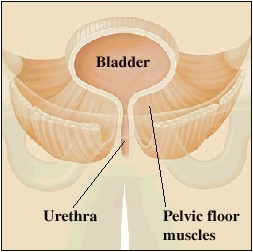Kegel exercises don’t require special clothing or equipment. They’re easy to learn and simple to do. And if you do them right, no one can tell you’re doing them, so they can be done almost anywhere. Your doctor, nurse, or physical therapist can answer any questions you have and help you get started.
A Weak Pelvic Floor
The pelvic floor muscles may weaken due to aging, pregnancy and vaginal childbirth, injury, surgery, chronic cough, or lack of exercise. If the pelvic floor is weak, your bladder and other pelvic organs may sag out of place. The urethra may also open too easily and allow urine to leak out. Kegel exercises can help you strengthen your pelvic floor muscles so they can better support the pelvic organs and control urine flow.
How Kegel Exercises Are Done
Try each of the Kegel exercises described below. When you’re doing them, try not to move your leg, buttock, or stomach muscles.
- While you’re urinating, try to stop the flow of urine. Start and stop it as often as you can.
- Contract as if you were stopping your urine stream, but do it when you’re not urinating.
- Tighten your rectum as if trying not to pass gas. Contract your anus, but don’t move your buttocks.
Helpful Hints
|
Try to hold each Kegel for a slow count to five. You probably won’t be able to hold them for that long at first, but keep practicing. It will get easier as your pelvic floor gets stronger. Eventually, special weights that you place in your vagina may be recommended to help make your Kegels even more effective.

